List of Hindu deities
Hinduism is the dominant religion of the Indian subcontinent. It comprises three major traditions, Shaivism, Vaishnavism and Shaktism,[1] whose followers considered Shiva, Vishnu and Shakti (also called as Devin) to be the supreme deity respectively. Most of the other deities were either related to them or different forms (incarnations) of these deities. Hinduism has been called the "oldest religion" in the world, and many practitioners refer to Hinduism as "the eternal law". (Sanātana Dharma).[2] Given below is a list of the chief Hindu deities followed by a list of Hindu deities (including demi-gods).The Hindus are claimed to be monotheistis Smartism, a relatively modern Hindu tradition (compared to the three older traditions), invites the worship of more than one god including Shiva, Vishnu, Shakti, Ganesha (the elephant god) and Surya (the sun god) among other gods and goddesses. It is not as overtly sectarian as either Vashnavism or Saivism and is based on the recognition that Brahman (God) is the highest principle in the universe and pervades all of existence.[3][4][5][6]
Main Deities
The Hindu trinity consists of Brahma the Creator, Vishnu the Preserver, and Shiva the Destroyer. The followers of the last two form two major sects.
Vishnu
Vaishnavism is the sect within Hinduism that worships Vishnu, the preserver god of the Hindu Trimurti ('three images', the Trinity), and his ten incarnations. It is a devotional sect, and followers worship many deities, including Rama and Krishna, both considered as incarnations of Vishnu. The adherents of this sect are generally non-ascetic, monastic and devoted to meditative practice and ecstatic chanting.[3][4][5][6] Some alternate names of Vishnu the Preserver:
- Narayana
- Venkateshwara, as Vishnu is known in parts of South India.
- Dasavatara, the 10 incarnations of Vishnu
Shiva
Saivism is the Hindu sect that worships the god Shiva. Shiva, the destroyer god among the Trimurti, is sometimes depicted as the fierce god Bhairava. Saivists are more attracted to asceticism than adherents of other Hindu sects, and may be found wandering with ashen faces performing self-purification rituals.[3][4][5][6] Some alternate names of Shiva:
Devi
Cults of goddess worship are ancient in India. The branch of Hinduism that worships the goddess, known as Devi, is called Shaktism. Followers of Shaktism recognize Shakti as the power that underlies the female principle, and Devi is often depicted as Parvati the consort of Shiva or as Lakshmi the consort of Vishnu. She is also depicted in other guises, such as the fierce Kali or Durga. In Shaktism, Adi Parashakti is regarded as Ultimate Godhead or Para Brahman. She is formless i.e. Nirguna in reality but may take many forms i.e. Saguna. Durga or Lalita tripur sundari is regarded as Supreme deity with forms. Shaktism is closely related with Tantric Hinduism, which teaches rituals and practices for purification of the mind and body.[3][4][5][6] Some alternate names of Shakti (Devi) the Mother Goddess:
- Durga
- Bhadrakali, a peaceful form of Kali
Related Deities
- Radha, the life energy, the soul of lord Krishna and the goddess of kindness, humanity, beauty.
- Brahma, despite being the creator god among the Trimurti, is rarely worshiped today
- Parvati, a form of Shakti and the wife of Shiva
- Ganesh, son of Shiva and Parvati and was also called Ganpati, the Ganapatya sectary worshipped Ganesh as their chief deity. He is god of wisdom and remover of all obstacles. He is worshipped before any other devi or deiti.
- Subramanya, son of Shiva and Parvati and was also called Muruga, Karthik, Kumara or Shanmukha, the Kaumaram sectary worshipped Subramanya as their chief deity. He's also the brother of Lord Ganesha.
- Ayyappa, son of Shiva and Mohini and was also called Shastha
- Saraswati, also known as Gayatri, is the wife of Brahma and goddess of knowledge and the arts
- Lakshmi is the wife of Vishnu and goddess of wealth and prosperity
- Hanuman, the 11th incarnation of Lord Shiva, is the monkey devotee and messenger of Rama (incarnation of Vishnu) and was also called Anjaneya, since his mother is anjana
- Shesha Naga, the serpent devotee of Vishnu
Avatars (Incarnations)
Vishnu
- Mohini, female incarnation of Vishnu
- Krishna, male incarnation of Vishnu
- Rama, male incarnation of Vishnu
Dasavatara
- Matsya, the fish
- Kurma, the tortoise
- Varaha, the boar
- Narasimha, the Half Man-Half Lion (Nara = man, simha = lion)
- Parashurama, Rama with the axe
- Vamana, the Dwarf
- Sree Rama, Sri Ramachandra, the king of Ayodhya and the hero of the epic Ramayana
- Bala Rama,Lord of Cultivation and Elder Brother of Lord Sree Krishna
- Sree Krishna, a hero of the epic Mahabharata and the creator of the Bhagavad Gita (Lord's Song).
- Kalki who is expected to appear at the end of Kali Yuga, the time period in which we currently exist.
Krishna is often associated with His beloved goddess Radha, and hence also known as Radha Krishna. Krishna was also manifested as Lord Jagannatha. People of Eastern India consider Chaitanya Mahaprabhu to be his re-incarnation. Krishna is the chief deity of the Iskcon Hare Krishna and other sects.
Sheshnag
Lakshmi
Minor Gods
The Rigveda speaks of Thirty-three gods called the Tridasha ('Three times ten'). They consisted of the 12 Adityas, the 8 Vasus, the 11 Rudras and the 2 Ashvins. Indra also called Śakra, lord of the gods, is the first of the 33 followed by Agni. Some of these brother gods were invoked in pairs such as Indra-Agni, Mitra-Varuna and Soma-Rudra.
Adityas
- Mitra, the patron god of oaths and of friendship,
- Varuna, the patron god of water and the oceans,
- Śakra, also called Indra, the king of gods, and the god of rains
- Dakṣa,
- Aṃśa,
- Aryaman,
- Bhaga, god of wealth
- Vivasvat, also called Ravi or Savitṛ,
- Tvāṣṭṛ, the smith among the gods,
- Pūsan, patron god of travellers and herdsmen, god of roads,
- Dhāt, god of health and magic, also called Dhūti
- Yama, god of Dharma(moral ethics), of death and of justice.
Vasus
Assistants of Indra and of Vishnu
- Agni the "Fire" god, also called Anala or "living",
- Vāyu the "Wind", the air god, also called Anila ("wind")
- Dyauṣ the "Sky" god, also called Dyeus and Prabhāsa or the "shining dawn"
- Pṛthivī the "Earth" god, also called Dharā or "support"
- Sūrya the "Sun" god, also called Pratyūsha, ("break of dawn", but often used to mean simply "light"), the Saura sectary worshipped Sūrya as their chief deity.
- Soma the "Moon" god, also called Chandra
- Aha ("pervading") or Āpa ('water"' or ether), also called Antarikṣa the "Atmosphere" or "Space" god,
- Dhruva ("motionless") the Polestar, also called Nakṣatra the god of the "Stars",
Rudras
The Ramayana tells they are eleven of the 33 children of the sage Kashyapa and his wife Aditi, along with the 12 Adityas, 8 Vasus and 2 Ashvins, constituting the Thirty-three gods.[2] The Vamana Purana describes the Rudras as the sons of Kashyapa and Aditi.[3] The Matsya Purana notes that Surabhi – the mother of all cows and the "cow of plenty" – was the consort of Brahma and their union produced the eleven Rudras. Here they are named Nirriti, Shambhu, Aparajita Mrigavyadha, Kapardi, Dahana, Khara, Ahirabradhya, Kapali, Pingala and Senani – the foremost.[4] Brahma allotted to the Rudras the eleven positions of the heart and the five sensory organs, the five organs of action and the mind.[2][3] [7][8]
Ashvins
The Ashvins (also called the Nāsatyas) were twin gods. Nasatya is also the name of one twin, while the other is called Dasra.
List in alphabetical order
Most of the Hindu temples are dedicated to Shiva, Vishnu (including his incarnations Krishna and Rama), Shakti (the mother goddess, hence including the forms of Durga and Kali and the goddesses Lakshmi and Saraswati), Ganesh and Hanuman.[9][10][11] The Hindu scriptures claimed that there were 33 Crore or 330 million (1 Crore = 10 million) gods, but this is not 33 crore, 33 Koti. Koti means kind "prakar". in translation koti is translated into crore that was wrong.
The number might be figurative but there are several names and forms for the multitude of gods.[12] Given below is an incomplete list of deities.
A
- Aakash
- Acyutah, another name of Vishnu.
- Adimurti one of Vishnu's avatars.
- Aditi is mother of the Devas.
- Adityas, are the offspring of Aditi.
- Agni* is the god of fire, and acceptor of sacrifices.
- Ammavaru goddess who laid the egg that hatched Brahma, Shiva and Vishnu.
- Anala "fire" in Sanskrit, equated among Agni.
- Anila is one of the Vasus, gods of the elements of the cosmos. He is equated with the wind god Vāyu, Anila being understood as the name normally used for Vāyu when numbered among the Vasus.
- Anumati ("divine favor" in Sanskrit, Devanagari: अनुमति), also known as Chandrama, is a lunar deity and goddess of wealth, intellect, children, spirituality, and prosperity. Her vehicle is Krisha Mrigam or Krishna Jinka (Blackbuck).
- Anuradha
- Ap In Hinduism, it is also the name of the deva, a personification of water, one of the Vasus in most later Puranic lists.
- Apam Napat is an eminent figure of the Indo-Iranian pantheon. In Hinduism, Apām Napāt is the god of fresh water, such as in rivers and lakes. In Zoroastrianism, Apąm Napāt is also a divinity of water, see also Burz.
- Aranyani is a goddess of the forests and the animals that dwell within them. Aranyani has the distinction of having one of the most descriptive hymns in the Rigveda dedicated to her, in which she is described as being elusive, fond of quiet glades in the jungle, and fearless of remote places.
- Aravan also known as Iravat (इरावत्, Irāvat)[1] and Iravant, is a minor character from the Hindu epic of Mahabharata. The son of Pandava prince Arjuna (one of the main heroes of the Mahabharata) and the Naga princess Ulupi, Iravan is the central god of the cult of Kuttantavar (Tamil: கூத்தாண்டவர்) —which is also the name commonly given to him in that cult—and plays a major role in the cult of Draupadi.
- Ardhanari is a composite androgynous form of the Hindu god Shiva and his consort Parvati (also known as Devi, Shakti and Uma in this icon). Ardhanarishvara is depicted as half male and half female, split down the middle. The left half is usually the female Parvati, illustrating her traditional attributes and the right half, Shiva.
- ArdraThe Hindu myth associated to Ardra is that of Taraka. Taraka is an asura who is granted invulnerability by Brahma.[1]
- Arjuna (pronounced [ɐrˈɟunɐ] in classical Sanskrit) (lit. 'bright' or 'silver' (cf. Latin argentum)) is the third of the Pandavas, the sons and princes of Pandu, who with Krishna, is considered to be the hero of the Hindu epic Mahabharata.
- Aruna is a personification of the reddish glow of the rising Sun,[1] which is believed to have spiritual powers. The presence of Aruṇá, the coming of day, is invoked in Brahmin prayers to Surya.
- Arundhati is the wife of the sage Vashista, one of the seven sages (Saptarshi) who are identified with the Ursa Major. She is identified with the morning star and also with the star Alcor which forms a double star with Mizar (identified as Vashista) in Ursa Major.
- Aryaman is one of the early Vedic deities (devas). His name signifies "bosom friend". He is the third son of Aditi. He is an Aditya, a solar deity. He is supposed to be the chief of the manes and the Milky Way is supposed to be his path.
- Ashapura -Mata no Madh is one of aspect devi. Her temples are mainly found in Gujarat.
- Aslesais the 9th Nakshatra among the 27 Nakshatras in Hindu astrology. Ashlesha is also known as the Clinging Star or Nāga.[1] It is known as Hydra. It extends from 16:40 to 30:00 Cancri.[2]
- Asura (Sanskrit: असुर,[1] Sanskrit ásu - "life force".[2] Compare: Æsir. Also see: Ahura Mazda) are non-suras, a different group of power-seeking deities besides the suras, sometimes considered naturalists, or nature-beings. They are the forces of chaos that are in constant battle with the Devas.
- Asvayujau is a goddess of good luck, joy and happiness.
- Aswiniis the first nakshatra (lunar mansion) in Hindu astrology, corresponding to the head of Aries, including the stars β and γ Arietis. The name aśvinī is used by Varahamihira (6th century). The older name of the asterism, found in the Atharvaveda (AVS 19.7; in the dual) and in Panini (4.3.36), was aśvayúj "harnessing horses"
- Ayyappan is a Hindu deity worshiped in a number of shrines across India. Ayyappan is believed to be an incarnation of Dharma Sasta, who is the offspring of Shiva and Vishnu (as Mohini, is the only female avatar of the God Vishnu) and is generally depicted in a yogic posture
- Ayyanar
- Ayya Vaikundar
- Aryadurga ( Devihasol Rajapur )
B
- Bagalamukhi
- Bahuchara Mata
- Balarama
- Bhadra
- Bhadrakali
- Bhaga
- Bhairava
- Bhairavi
- Bharani
- Bharati
- Bhavani
- Bhishma
- Bhumidevi
- Bhumiya
- Bhutamata
- Bhuvaneshvari
- Brahma
- Brahman
- Brahmani
- Brihaspati
- Budha
- Buddha
- Buddhi
- Budhi Pallien
- Balaji
- Beeralingeswara
- Balambika
C
D
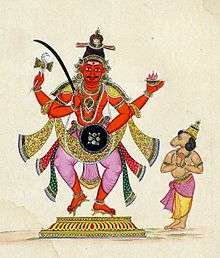
- Daksha
- Dakshayani
- Danu
- Dattatreya
- Deva
- Devi
- Devnarayan
- Dhanvantari
- Dhara
- Dharma
- Dharma Shasta
- Dhatri
- Dhumavati
- Diti
- Durga
- Draupadi
- Dyaus Pita
- Dhrishtadyumna
G

- Ganesha (see also Ashtavinayaka)
- Ganga
- Garuda
- Gangothri
- Gomatha
- Goddess Gauri
- Gayatri
- Ghanshyam
- Guardians of the directions
- Gusainji
H
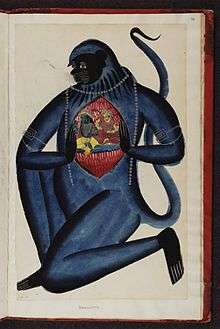
- Hanuman
- Hari
- Hari Krishna
- Hari Hara
- Hrishikesh
- Hedavde Mahalaxmi
I
J
K
- Kali
- Kalki
- Kama
- Kamalatmika
- Kamakhya
- Kamakshi
- Kanaka Durga
- Kannaki Amman
- Karna
- Kartikeya
- Karuppa Swami
- Kashyapa
- Kathyayini
- Ketu
- Khandoba
- Khatushyamji
- Khodiyar
- Kirata Moorti
- Krishna
- Kubera
- Kumbhakarna
L
- Lakshmi (see also Ashta Lakshmi)
- Lalitha
- Lakshman
- Lambodar
M
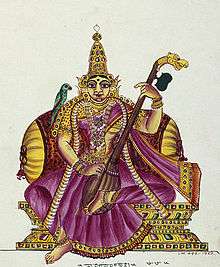
- Madurai Veeran
- Mahesh, another name for Shiva
- Mahavidya
- Mahavishnu
- Mallanna
- Mariamman
- Markandeya
- Matrikas
- Meenakshi
- Manasa
- Maruts
- Matangi
- Manikanta
- Mhasoba
- Veer Mhaskoba
- Mitra
- Mohini
- Muthyalamma
- Murugan
- Mariamman
- Muniandi
- Muthappan
- Mahalasa
- Mukyaprana
- Mookambika
- Muneeswaran
- Mahakali
- Mahalaxmi
- Mangala
N
- Naga Devata
- Naga siren
- Naga Yakshi
- Naina Devi
- Nandni
- Nandi
- Narada
- Narasimha
- Narayana
- Nataraja
- Nirrith
- Nirrta
- Nookambika
P
R
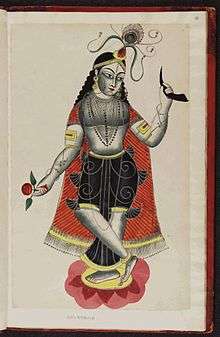
S
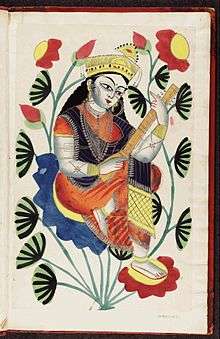
- Samaleswari
- Santoshi Mata
- Saraswati
- Saranyu
- Sati
- Shani
- Savitr
- Savitar
- Sesha
- Shakti
- Shakti Peethas
- Shantadurga
- Shiva (see also Astamurti)
- Sita
- Skanda
- Soma
- Subrahmanya
- Surya
- Shitala
- Svaha
- Swaminarayan
T
U
V
- Vamana
- Varaha
- Varuna
- Vasu
- Vayu
- Veerabhadra
- Veer Mhaskoba
- Venkateshwara
- Vishnu
- Vishvaksena
- Vithoba
- Vishwakarma
- Vivasvat
- Valli
Y
See also
References
- Jeffrey Brodd (2003), World Religions: A Voyage of Discovery, Saint Mary's Press, p. 45, ISBN 978-0-88489-725-5: '[..] many gods and goddesses (traditionally 330 million!) [...] Hinduism generally regards its 330 million as deities as extensions of one ultimate reality, many names for one ocean, many "masks" for one God.'
- Joe David Brown; Time-Life Books (1961), Joe David Brown, ed., India, Time, Inc.: "Though the popular figure of 330 million is not the result of an actual count but intended to suggest infinity, the Hindu pantheon in fact contains literally hundreds of different deities [...]"
- Notes
- ↑ Nath 2001, p. 31.
- ↑ Knott 1998, p. 5.
- 1 2 3 4 "The Four Denominations of Hinduism". Retrieved 7 February 2014.
- 1 2 3 4 "The Four Main Denominations". Retrieved 7 February 2014.
- 1 2 3 4 "Hindu Sects". Retrieved 7 February 2014.
- 1 2 3 4 Dubois. Hindu Manners, Customs and Ceremonies. Cosimo. p. 111.
- ↑ Mani, Vettam (1975). Puranic Encyclopaedia: A Comprehensive Dictionary With Special Reference to the Epic and Puranic Literature. Delhi: Motilal Banarsidass. ISBN 0-8426-0822-2.
- ↑ Daniélou, Alain (1991). The myths and gods of India. Inner Traditions International. pp. 102–4, 341, 371. ISBN 0-89281-354-7.
- ↑ "Hindu Gods & Goddesses". Sanatan Society. Retrieved 7 February 2014.
- ↑ "Hinduism". About.com. Retrieved 7 February 2014.
- ↑ "Hindu gods and goddesses". usefulcharts. Retrieved 7 February 2014.
- ↑ Lynn Foulston, Stuart Abbott. Hindu goddesses: beliefs and practices. pp. 1–2.


